Album of watercolor and pen-and-ink designs for embroidery. [British Isles, ca. 1820-1830].
Folio (397 x 250 mm). 110 leaves [plus 29 blanks], of varying sizes, many on guards, of which 6 are large and folding, and 2 small loose sheets, containing dozens of highly finished pen-and-ink or watercolor floral and foliate embroidery designs. Some dampstaining at front with traces of mold, some dust-soiling to edges, the large folding leaves with a few mostly marginal tears and creases. Contemporary half brown goatskin and marbled paper over boards, smooth spine divided into gold-ruled compartments, each with a large gilt fleuron; a contemporary manuscript list of the 72nd Regiment of Foot (ca. 1823-ca. 1841) used as front pastedown; rubbed, loss to paper on front cover. Provenance: bookplate of Rev. James Lambert, A.M., Trinity College, Cambridge (on back pastedown); childish drawing on front free endleaf; old largely effaced purple inkstamp, only the name “Exeter” legible; with Bertram Rota, catalogue 303, Architecture, item 85.***
A large portfolio of carefully executed designs for embroidery or needlework, carried out in the sunset years of hand embroidery. In 1828 the Alsatian inventor Josué Heilmann produced the first embroidery machine, which could operate with over 300 needles simultaneously. Although such machines did not become widespread for another 20 years, this was to be the death-knell for everyday domestic hand-embroidery.
The designs include floral borders, swags and sprigs, spot and corner designs, repeating motifs, curlicues, and some abstract designs. About 60% are in watercolor, sometimes skillfully combining several colors on one page. The uncolored designs are in pen and ink and/or gray wash. All but a couple of sketches at the end appear to be the work of a professional draftsman. Various laid and wove papers are used, with watermarks of the makers S. Wise & Co.; Whatman; Hall, Whatman & Balston; and John Hayes, with dates ranging from 1819 to 1824; with some apparently later unwatermarked wove papers.
Some designs are openwork, for broderie anglaise; others are whitework patterns to be worked on muslin, with delicate needlework fillings. About five appear to be unfinished, with some of the designs lightly traced in pencil, and a couple of others have only partial coloring. There are a few faint penciled notes, such as “red pattern, light sprays of roses form the veil,” or “very pretty when worked.” Most leaves bear an x or cross in pencil near the gutter, possibly indicating that the designs on the sheet had been copied. Item #2988
No longer available

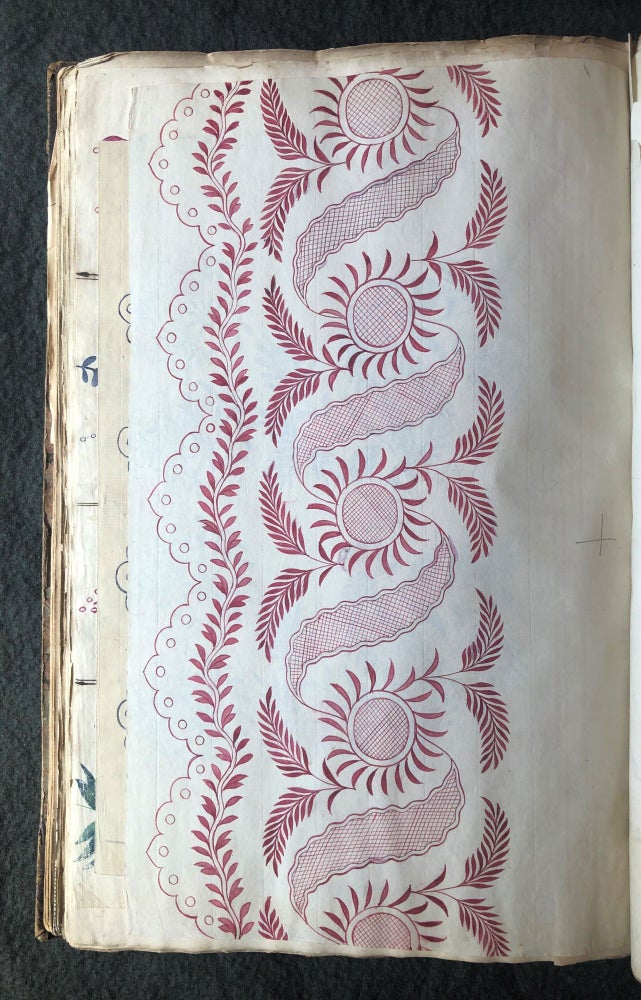
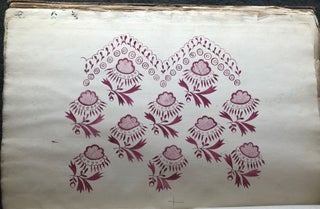
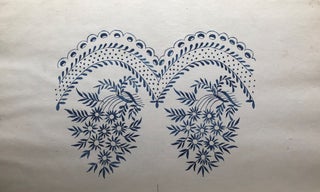
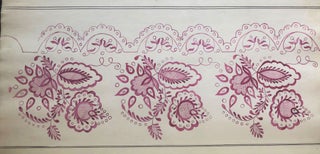
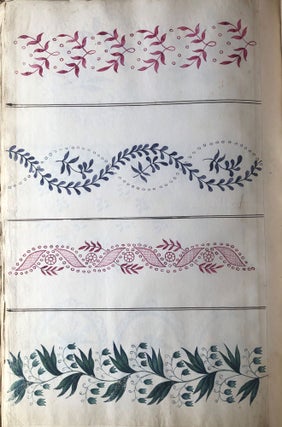
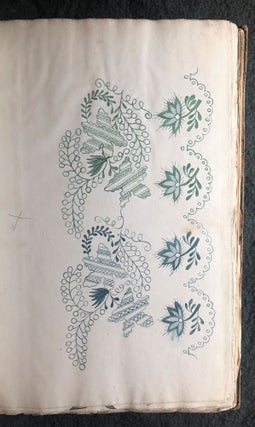
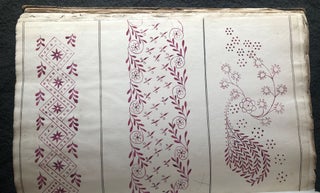
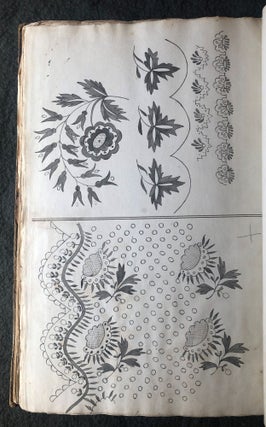
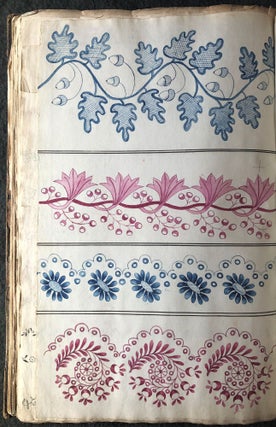
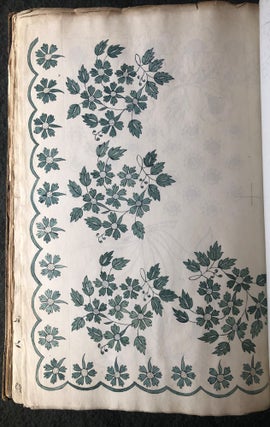
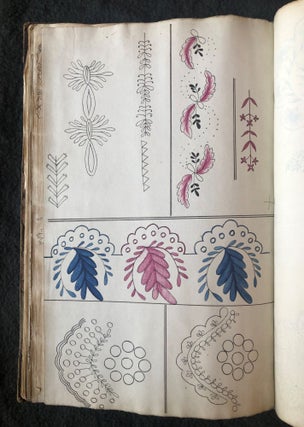
.jpg?width=320&height=427&fit=bounds&auto=webp&v=1655563321)